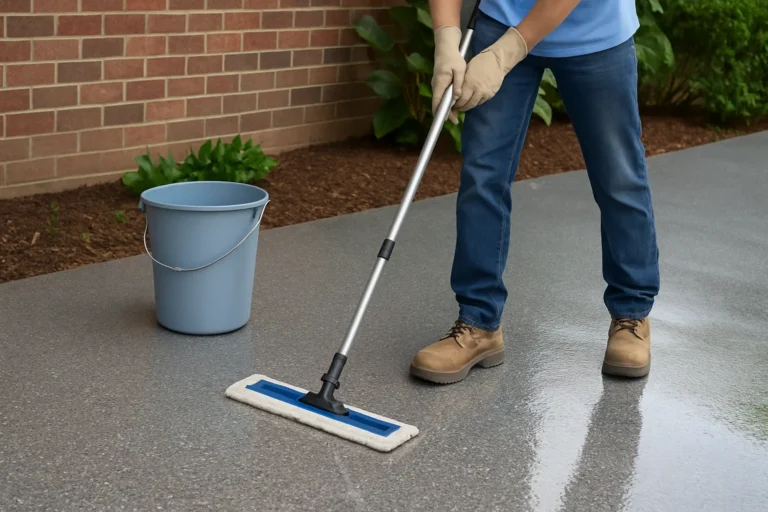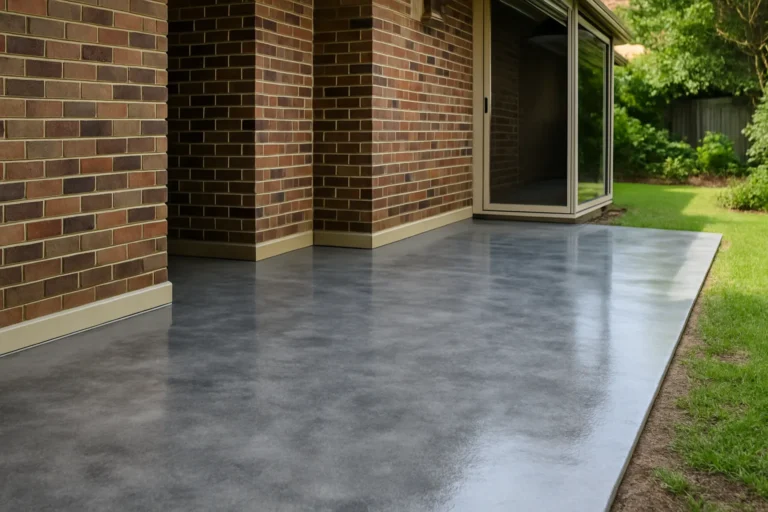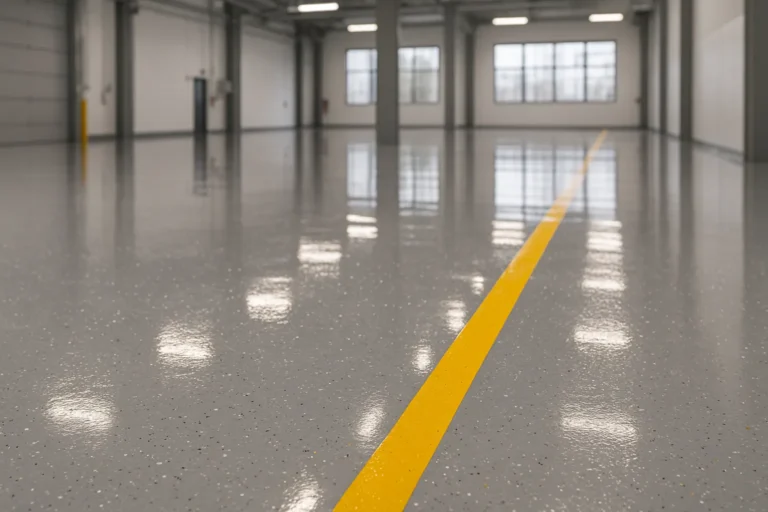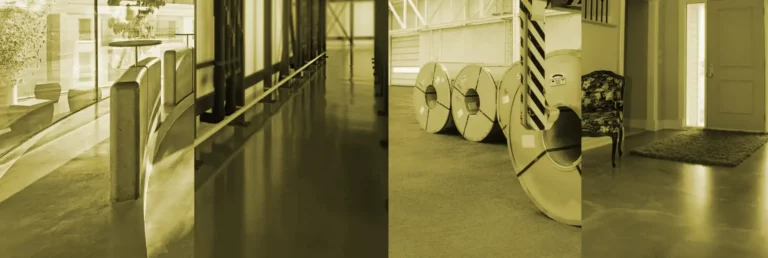Concrete Surface Preparation Using A Shot Blasting Machine
Concrete surface preparation is a crucial step in many construction and renovation projects. One of the most effective methods for achieving a clean, textured surface is through the use of a shot blasting machine. This powerful equipment has revolutionized the way professionals approach concrete preparation, offering numerous benefits in terms of efficiency, quality, and environmental impact.
Shot blasting is a versatile technique that can be applied to various concrete surfaces, from industrial floors to bridge decks. By propelling small steel shots at high velocities onto the concrete surface, shot blasting machines effectively remove contaminants, create texture, and prepare the surface for coatings or overlays.
- Improves surface profile for better adhesion
- Removes dirt, oil, and other contaminants
- Creates a uniform texture across large areas
- Environmentally friendly compared to chemical methods
2. What is Shot Blasting for Concrete Surfaces?
Shot blasting is a mechanical surface preparation method that uses high-velocity steel shots to clean and profile concrete surfaces. The process involves propelling small, spherical steel particles at the concrete surface using centrifugal force. As these shots impact the surface, they remove contaminants, create a textured profile, and bounce back into the machine for reuse.
This method is highly effective for removing surface laitance, exposing aggregate, and creating a suitable profile for coating adhesion. Shot blasting can be used on horizontal surfaces and, with specialized equipment, on vertical surfaces as well.
2.1. Types of Shot Blasting Media
The choice of shot blasting media can significantly impact the results of the surface preparation process. Different types of media are available, each with its own characteristics and applications:
- Steel Shot: The most common type, available in various sizes for different surface profiles
- Steel Grit: Angular particles that create a more aggressive profile
- Aluminum Oxide: Used for softer surfaces or when steel contamination is a concern
- Glass Beads: Provide a smoother finish and are often used for cleaning rather than profiling
|
Media Type |
Surface Profile |
Durability |
Cost |
|
Steel Shot |
Medium to High |
High |
242702 |
|
Steel Grit |
High |
High |
242702$ |
|
Aluminum Oxide |
Low to Medium |
Medium |
242702 |
|
Glass Beads |
Low |
Low |
$ |
3. How Does a Shot Blasting Machine Work?
3.1. Components of a Shot Blasting Machine
A shot blasting machine consists of several key components that work together to effectively prepare concrete surfaces:
- Blast Wheel: The heart of the machine, responsible for propelling the shot at high speeds
- Shot Hopper: Stores and feeds the shot into the blast wheel
- Dust Collector: Captures and filters airborne particles generated during the blasting process
- Magnetic Separator: Removes contaminants from the recycled shot
- Control Panel: Allows operators to adjust machine settings and monitor performance
These components are housed in a sturdy frame, often with wheels or tracks for mobility on large job sites.
3.2. The Shot Blasting Process Explained
The shot blasting process follows a cyclical pattern:
- Shot is fed into the blast wheel from the hopper
- The blast wheel accelerates the shot and propels it onto the concrete surface
- Upon impact, the shot removes contaminants and creates a textured profile
- The used shot and debris are collected by the machine
- A magnetic separator removes contaminants from the shot
- Clean shot is recycled back into the hopper for reuse
- Dust and fine particles are captured by the dust collection system
This continuous cycle ensures efficient operation and minimal waste, making shot blasting a cost-effective and environmentally friendly surface preparation method.
- Closed-loop system minimizes material waste
- Adjustable blast patterns for different surface requirements
- Dust collection systems ensure a clean work environment
4. Benefits of Using a Shot Blasting Machine for Concrete Preparation 
4.1. Efficiency and Time-Saving Advantages
Shot blasting machines offer significant efficiency gains compared to traditional surface preparation methods:
- Rapid Surface Coverage: Shot blasting can cover large areas quickly, reducing project timelines
- Consistent Results: Machines provide uniform surface profiles across the entire treated area
- Minimal Downtime: Continuous operation with quick setup and minimal maintenance requirements
- Versatility: Suitable for various concrete surfaces and preparation needs
These efficiency benefits translate to cost savings and improved project management for contractors and facility managers.
4.2. Environmental and Safety Benefits
In addition to efficiency, shot blasting offers several environmental and safety advantages:
- Dust-Free Operation: Integrated dust collection systems minimize airborne particles
- Chemical-Free Process: No harmful chemicals or residues to dispose of
- Reduced Noise Levels: Quieter operation compared to jackhammers or scarifiers
- Improved Worker Safety: Less physical strain and reduced exposure to hazardous materials
By choosing shot blasting, companies can demonstrate their commitment to environmental responsibility and worker well-being.
5. Applications of Shot Blasting in Concrete Surface Preparation
5.1. Indoor Concrete Applications
Shot blasting is widely used for indoor concrete surface preparation in various settings:
- Warehouse Floors: Preparing surfaces for epoxy coatings or polishing
- Retail Spaces: Creating slip-resistant textures or removing old coatings
- Manufacturing Facilities: Cleaning and profiling floors for heavy-duty coatings
- Parking Garages: Preparing decks for traffic coatings or waterproofing systems
Indoor applications often require careful dust control, which shot blasting machines excel at providing.
5.2. Outdoor Concrete Applications
Outdoor concrete surfaces also benefit from shot blasting preparation:
- Bridge Decks: Removing contamination and preparing for overlay systems
- Airport Runways: Creating textured surfaces for improved traction
- Highway Surfaces: Preparing for line striping or surface treatments
- Concrete Sidewalks: Removing stains and creating slip-resistant textures
Outdoor applications may require larger, more powerful shot blasting machines to cover extensive areas efficiently.
5.3. Repair and Maintenance Projects
Shot blasting is an essential tool for concrete repair and maintenance:
- Coating Removal: Efficiently stripping old coatings or sealers
- Surface Leveling: Removing high spots or uneven areas
- Contamination Cleanup: Eliminating oil stains or chemical spills
- Preparation for Overlays: Creating the ideal surface profile for new concrete toppings
The versatility of shot blasting makes it invaluable for a wide range of repair and maintenance tasks.
6. Choosing the Right Shot Blasting Equipment
6.1. Factors to Consider
Selecting the appropriate shot blasting equipment requires careful consideration of several factors:
- Surface Area: Larger areas may require more powerful, wider machines
- Surface Condition: Heavily contaminated or coated surfaces may need more aggressive blasting
- Desired Profile: Different CSP (Concrete Surface Profile) levels require specific machine settings
- Power Source: Electric or propane-powered options are available for different job site requirements
- Mobility Needs: Consider the weight and maneuverability of the machine for your specific application
By evaluating these factors, you can ensure that you choose a shot blasting machine that meets your project’s unique requirements.
6.2. Popular Shot Blasting Machine Models
Several manufacturers offer high-quality shot blasting machines for concrete surface preparation. Some popular models include:
- Blastrac BMP-265E: Compact electric model ideal for small to medium-sized projects
- IMPACTS 390E: Versatile machine suitable for a wide range of applications
- Werkmaster Titan XT: Heavy-duty option for large-scale industrial projects
When selecting a model, consider factors such as blast pattern width, power output, and dust collection capacity to match your specific needs.
7. Shot Blasting vs. Other Concrete Surface Preparation Methods
7.1. Shot Blasting vs. Grinding
Shot blasting and grinding are both popular methods for concrete surface preparation, but they have distinct differences:
Shot Blasting:
- Creates a more aggressive surface profile
- Faster for large areas
- Better for removing thick coatings
- Less operator fatigue
Grinding:
- Provides a smoother finish
- Better for leveling uneven surfaces
- More precise control over material removal
- Can be used on edges and corners
The choice between shot blasting and grinding often depends on the specific project requirements and desired outcome.
7.2. Shot Blasting vs. Chemical Etching
Chemical etching is another method used for concrete surface preparation, but shot blasting offers several advantages:
Shot Blasting:
- No chemical residues or disposal concerns
- Creates a more uniform surface profile
- Faster for large areas
- More effective at removing contaminants
Chemical Etching:
- Can be used in areas inaccessible to machines
- Lower initial equipment cost
- Suitable for DIY projects
For professional applications, shot blasting is generally preferred due to its efficiency and environmental benefits.
8. Best Practices for Concrete Surface Preparation Using A Shot Blasting Machine 
8.1. Pre-Blasting Preparation
Proper preparation is crucial for successful shot blasting:
- Inspect the surface for obstacles or damage
- Remove loose debris and sweep the area
- Mark any floor joints or obstacles that require special attention
- Ensure proper ventilation and set up dust containment if necessary
- Check and adjust the shot blasting machine before starting
Thorough preparation helps ensure a smooth and efficient shot blasting process.
8.2. During the Shot Blasting Process
Follow these best practices during the shot blasting operation:
- Maintain a consistent speed and overlap between passes
- Monitor shot consumption and refill as needed
- Check dust collection systems regularly
- Adjust blast intensity based on surface conditions
- Use proper personal protective equipment (PPE)
Adhering to these practices will help achieve optimal results and maintain a safe work environment.
8.3. Post-Blasting Cleanup and Inspection
After shot blasting, proper cleanup and inspection are essential:
- Thoroughly vacuum the surface to remove all dust and debris
- Inspect the surface for any missed spots or inconsistencies
- Perform adhesion tests if applying coatings
- Clean and maintain the shot blasting equipment
- Properly dispose of collected dust and debris
A thorough post-blasting process ensures the surface is ready for the next step in your project.
9. Maintenance and Care of Shot Blasting Equipment
Regular maintenance is crucial for the longevity and performance of shot blasting equipment:
- Clean the machine thoroughly after each use
- Inspect and replace worn parts, such as blast wheels and liners
- Check and clean dust collection filters regularly
- Lubricate moving parts according to the manufacturer’s recommendations
- Store the equipment in a dry, protected area when not in use
Proper maintenance not only extends the life of the equipment but also ensures consistent performance and results. Concrete etching technique Concrete grinding equipment helps smooth out rough concrete floors These machines use special discs to remove bumps and make surfaces flat
10. Cost Considerations for Shot Blasting Concrete Surfaces
When evaluating the cost of shot blasting, consider the following factors:
- Equipment Purchase or Rental: Initial investment vs. project-based rental
- Operating Costs: Power consumption, shot media, and replacement parts
- Labor Costs: Skilled operator wages and training
- Project Size: Economies of scale for larger projects
- Surface Condition: More challenging surfaces may require additional time and resources
While shot blasting may have higher upfront costs compared to some methods, its efficiency and quality results often make it more cost-effective in the long run.
|
Cost Factor |
Short-Term Project |
Long-Term Investment |
|
Equipment |
Rental fees |
Purchase price |
|
Media |
Per project usage |
Bulk purchasing |
|
Labor |
Hourly rates |
Trained staff |
|
Maintenance |
Minimal |
Regular upkeep |
FAQs About Concrete Surface Preparation Using A Shot Blasting Machine
What is the ideal concrete surface profile achieved by shot blasting?
The ideal concrete surface profile (CSP) achieved by shot blasting typically ranges from CSP 3 to CSP 5, depending on the specific requirements of the project. This range provides excellent adhesion for most coatings and overlays. The exact profile can be adjusted by changing the shot size, blast wheel speed, and machine travel speed.
How long does it take to shot blast a concrete surface?
The time required to shot blast a concrete surface depends on various factors, including the size of the area, surface condition, and desired profile. On average, a professional-grade shot blasting machine can cover 1,000 to 3,000 square feet per hour. However, heavily contaminated or coated surfaces may require multiple passes, increasing the overall time.
Can shot blasting remove paint or coatings from concrete?
Yes, shot blasting is highly effective at removing paint and coatings from concrete surfaces. The high-velocity steel shot can quickly strip away most types of coatings, including epoxy, urethane, and acrylic-based products. The effectiveness may vary depending on the thickness and type of coating, but in most cases, shot blasting provides a fast and efficient removal method.
Is shot blasting suitable for all types of concrete surfaces?
Shot blasting is suitable for most concrete surfaces, but there are some limitations. It works best on horizontal or slightly sloped surfaces and may not be ideal for highly uneven or deteriorated concrete. Additionally, shot blasting may not be suitable for very soft or green concrete, as it could cause surface damage. For specialized applications, such as vertical surfaces or intricate patterns, alternative methods may be more appropriate.
What safety precautions should be taken when using a shot blasting machine?
When using a shot blasting machine, several safety precautions should be observed. Operators should wear appropriate personal protective equipment (PPE), including safety glasses, hearing protection, and dust masks or respirators. The work area should be properly cordoned off to prevent unauthorized access. Proper ventilation is crucial to manage dust levels, and all electrical connections should be properly grounded. Regular equipment inspections and adherence to manufacturer guidelines are also essential for safe operation.





